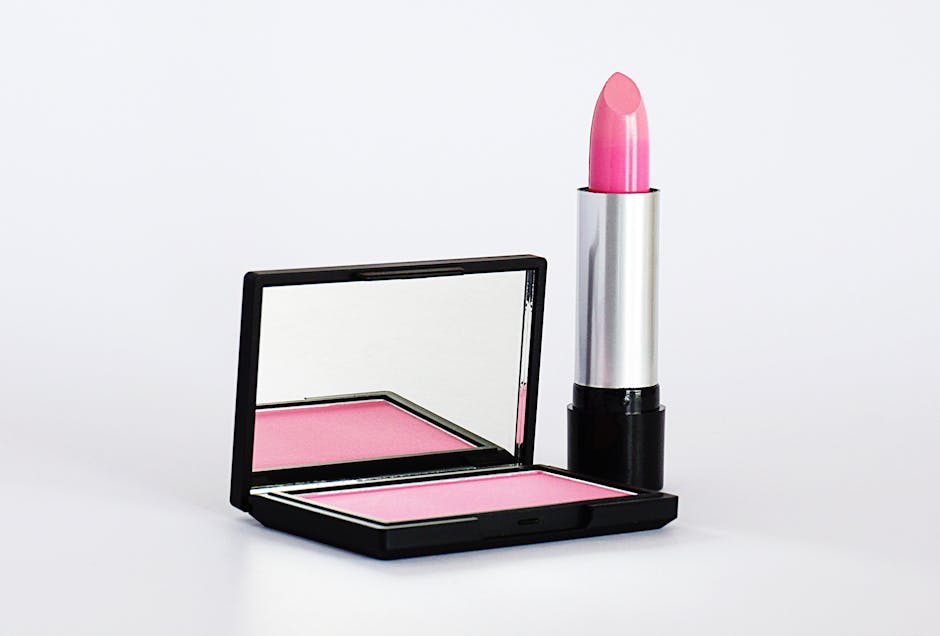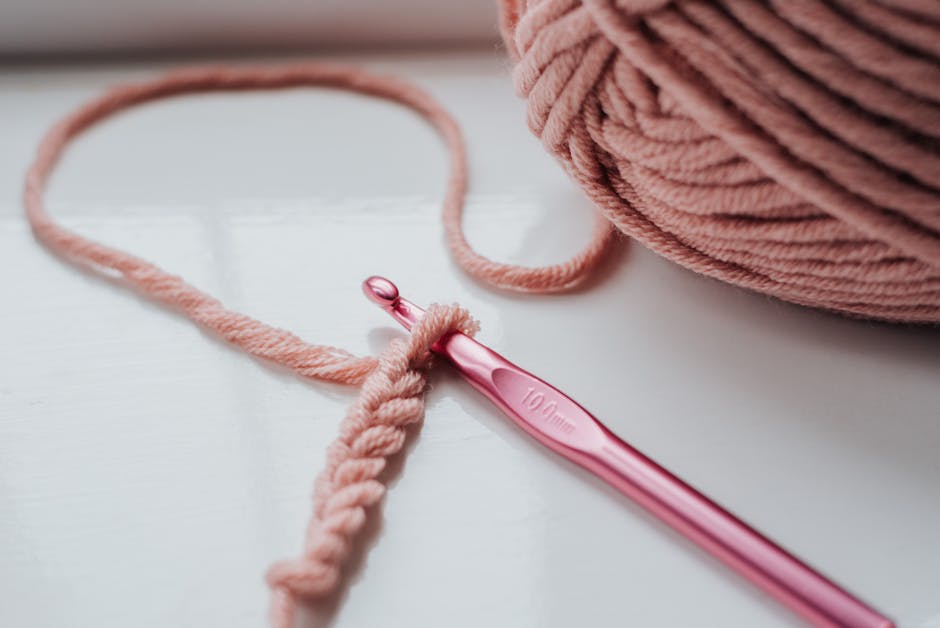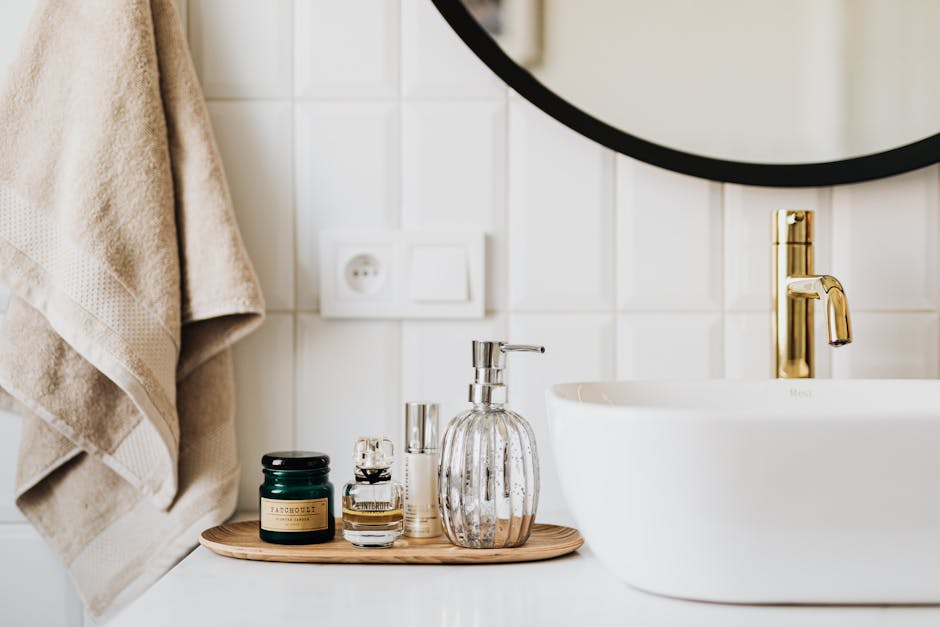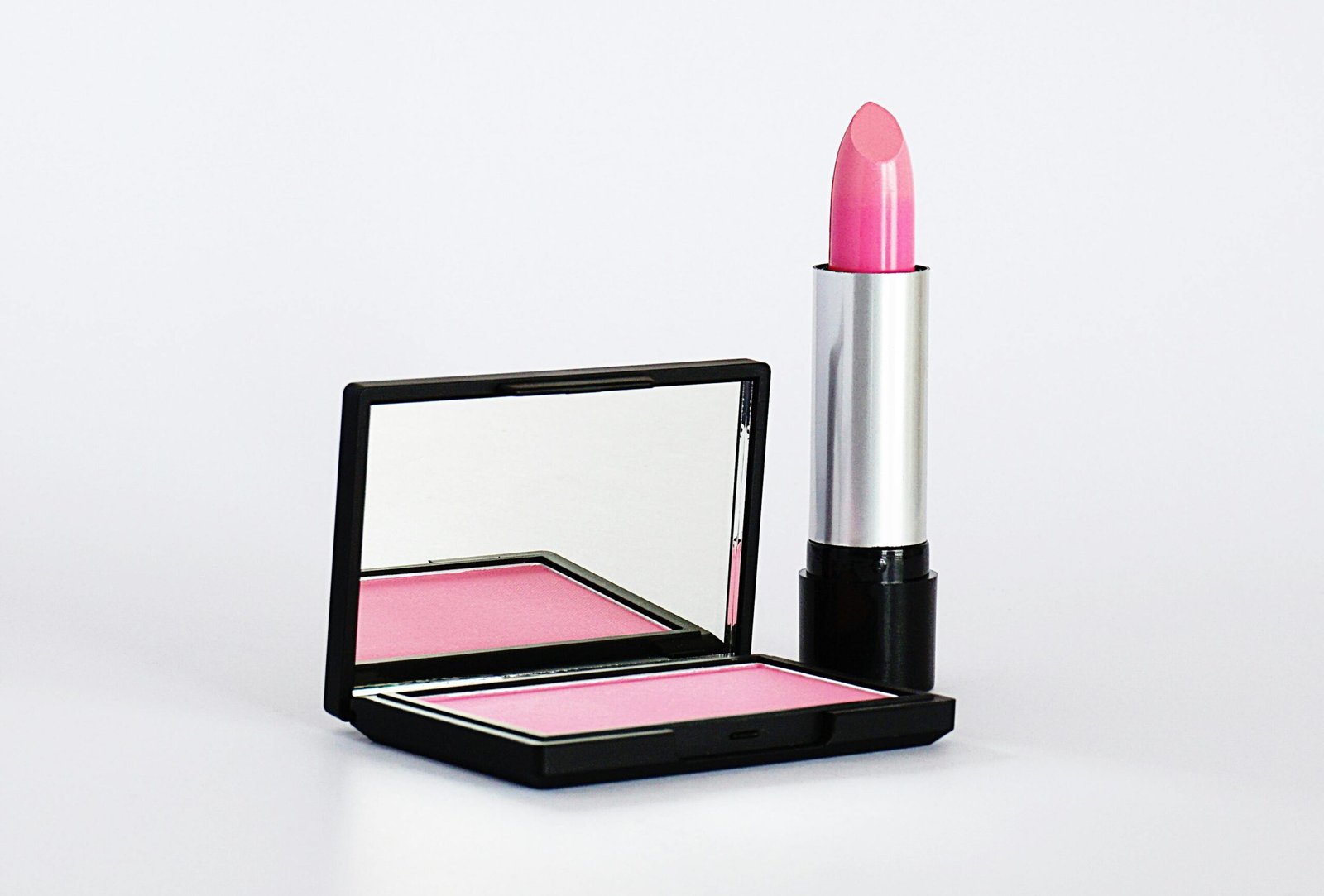Introduction
In this toss-and-go era, a refreshing movement is slowly making a roar in the world of beauty and skin care: DIY, or do-it-yourself, with a sprinkle of nature thrown in the mix. A growing number of individuals are rethinking the off-the-shelf products lining their bathroom counters, instead turning their gaze towards the kitchen pantry for a little skincare magic. Why this sudden shift?
For starters, it’s a call back to nature. A homemade, natural skincare regimen places a wellness spotlight on the reaping health benefits of ingredients that come straight from nature. Furthermore, these homemade products are more than just beneficial for our skin; they also tick the eco-friendly box. But don’t be fooled – this trend isn’t taking us back to the Stone Age; quite the opposite, it’s a forward-thinking initiative of creating beauty products that are healthy, pure, and eco-friendly.
The beauty of DIY skincare is the control – you become the alchemist. You get to choose what goes onto your skin, avoiding harsh chemicals and unlocking the wholesome goodness of natural ingredients. Just imagine a radiant you, making a small, yet powerful impact on the planet. Now, isn’t that worth exploring?

Introduction
Discover the world of DIY beauty products and change how you care for your skin. With the influx of skincare products on the market, take control and craft your own potions tailored specifically to your personal needs.
Rise of DIY Beauty Products
In recent years, a shift towards homemade skincare alternatives is evident, with more and more people crafting their own beauty concoctions. This surge in popularity isn’t without reason. Key drivers for this trend include:
- Quest for Natural Products: A growing preference for natural, chemical-free options is noticed. These products lead us towards a healthier lifestyle and give us clarity about what is being applied to our skin – no complex, hard-to-pronounce chemical names included!
Multi-fold Benefits of Natural Skincare Remedies
The preference for homemade skincare isn’t limited to just riding the trend wave. Instead, it has notable health and environmental benefits:
-
Health Benefits: Ingredients sourced from nature eliminate potential exposure to harmful chemical substances.
-
Environmental Impact: The use of natural products means the absence of elements causing harm to the earth. This is crucial in our present time, considering the rapid ecological degradation observed worldwide.
Welcome to Your New Skincare Regime
Ready to dive into the world of customized skincare? Let’s unravel the beauty of creating your own skincare solutions. Welcome to an unfiltered beauty regime tailored just for you – healthier, cost-effective, and more eco-friendly. Embrace the exciting journey of establishing your personal skincare pantry, one DIY recipe at a time.

Skincare Basics
The journey to achieving healthy, glowing skin begins with the understanding of basic skincare routines and identifying your skin type. First, let’s get into the nitty-gritty of a typical skincare routine, distilled down to its simplest form: cleanse, exfoliate, and moisturize. Sounds simple, right?
But let’s take a step back, first and foremost, understanding your skin type is paramount. Human skin is usually categorized into four main types: normal, dry, oily, and combination. Sometimes, it can also be sensitive or acne-prone. Knowing your skin type is crucial as it helps you choose the right products and custom-fit your skincare routine.
Now to the basics. Cleansing, as the name suggests, involves cleaning your face to remove dirt, makeup, and excess oil, keeping your pores clear and your skin looking fresh. Exfoliation, the next step, helps shed dead skin cells, speeding up the skin renewal process and giving your complexion a boost. The third step, moisturizing, is essential to keep your skin hydrated, maintain its barrier and prevent dryness or oiliness.
Now, let’s talk natural ingredients. They’ve been around since ancient times and have stood the test of time for their effectiveness and safety. And, if you are leaning towards DIY beauty products, then you’re in for a treat. Ingredients like honey (a natural humectant), aloe vera (known for its soothing properties), citrus fruits (full of brightening vitamin C), and oils like coconut or olive (great for nourishment) are common items in the DIY skincare universe. Each one boasts properties that cater to specific skin needs, letting you tailor your regimen perfectly.
Thus, by understanding the basics of skincare and your skin type, and knowing about natural ingredients, you lay the groundwork for a skincare routine that is both personalized and natural. The world of DIY beauty products is about to get a lot more exciting, so let’s dive deeper, shall we?

DIY Facial Cleansers
Diving into the realm of DIY facial cleansers, you’ll uncover a plethora of natural ingredients with amazing skincare properties. Honey, olive oil, yogurt, and coconut oil are some commonly used elements in homemade facial cleansers. For instance, honey is an exceptional cleanser with its antibacterial and moisturizing properties. Incidentally, olive oil is a natural antioxidant, helping to protect the skin from harmful elements, while yogurt, rich in lactic acid, works as an exfoliant to give you a natural glow.
To tailor your skincare to your specific needs, here are some simple homemade recipes for different skin types. For normal or combination skin, try a blend of honey, yogurt, and a few drops of lemon juice. Dry skin types may benefit from an ultra-hydrating mix of honey, olive oil, and avocado. And for oily skin prone to breakouts, take advantage of the antibacterial properties of honey combined with aloe vera’s soothing effects.
Embracing DIY facial cleansers does more than just serving skincare benefits, but it can also be financially rewarding. Commercial skincare products can be pricey, with some high-end facial cleansers setting you back a significant amount. Making your cleanser at home with natural ingredients often found in your kitchen not only guarantees you know exactly what’s going on your skin but could also save you a fair bit of money.
In conclusion, DIY facial cleansers offer a customizable, economical, and eco-friendly alternative to chemically-loaded conventional options. It’s a fascinating area of self-discovery where you literally get to look under your skin and design your skincare routine.

DIY Facial Scrubs (Exfoliants)
When it comes to facial skincare, exfoliation is the unsung hero. It’s all about sweeping away those dead skin cells taking up valuable real estate, making room for new ones. This regular eviction helps keep your skin soft, radiant, and healthy.
Now, don’t you worry if this sounds harsh. We won’t send you off to rub sandpaper on your face. The beauty of DIY facial scrubs lies in the use of natural, gentle ingredients that not only exfoliate but nourish your skin as well. Let’s dive into a couple of easy DIY recipes that’ll put an eco-friendly spin on your skincare routine.
One of the simplest DIY facial scrub recipes out there involves just two ingredients you probably have in your pantry right now – sugar and coconut oil. The sugar offers the exfoliation, while the coconut oil brings the moisture. Just blend half a cup of sugar with half a cup of melted coconut oil. Voila! You have a natural, skin-friendly exfoliant ready.
For those who struggle with oily skin, we’ve got an alternative. Mix two tablespoons of oatmeal, one tablespoon of honey, and a little lemon juice. These ingredients serve dual purposes – exfoliating and controlling oil production.
The perks of these DIY facial scrubs go beyond their natural, skin-friendly nature. They’re also light on the pocket! Consider the store-bought alternatives which can range from $10 to even upwards of $50, while the cost of homemade scrubs averages at a mere few dollars per batch. As a bonus, you are in full control of what goes on your skin.
At the end of the day, the beauty of DIYs lies not only in the end result but in the process. The process of understanding your skin, putting together ingredients that it loves, and then sitting back to enjoy the benefits. And if that’s not a win-win situation, we don’t know what is.

DIY Facial Masks
Facial masks hold an irreplaceable position in the skincare routine. Acting almost as a nutrient-rich food source for our skin, they deliver highly concentrated beneficial ingredients deep within our pores, addressing specific skin problems like dryness, acne, or sensitivity.
But here’s the thing: You don’t have to break your bank at an expensive spa or splurge on branded products to treat your skin right. With simple kitchen staples, you can cook up your own DIY facial masks which tailor specifically to your skin’s needs.
For dry skin, a mask made from half an avocado and a tablespoon of honey provides much-needed moisturization. Avocado is rich in fatty acids that nourish and soften the skin, and honey has humectant properties, trapping moisture in.
Dealing with acne? A mask made with a tablespoon of honey and a teaspoon of cinnamon could be your solution. Both ingredients possess anti-bacterial properties and can help reduce inflammation and redness caused by breakouts.
For sensitive skin, try a soothing mask with half a cup of cooked, cooled oatmeal mixed with a tablespoon of honey. Oatmeal contains anti-inflammatory and antioxidant compounds that can relieve dry, itchy, or irritated skin, while honey adds a touch of moisture and helps to reduce redness.
Clearly, not only do these DIY facial masks offer an array of skin benefits, but they also serve as a budget-friendly alternative to storebought counterparts. Plus, by whipping up your own concoction, you’re ensuring no harmful chemicals or unknown ingredients are touching your precious face.
Every skin type deserves some self-love and a well-fitted mask. Aren’t you excited about the idea of treating your face with home-cooked love and care? Just always remember to test a small patch of your skin first for potential allergies. Enjoy pampering yourself!

DIY Toners
Toning is often considered a skippable step in the skincare regime. But in reality, a good toner is like a Swiss Army Knife that serves multiple purposes. It serves as an excellent healing, moisturizing, pH balancing, and pore-shrinking agent. Not just that, it’s an essential bridge between cleansing and moisturizing, preparing your skin to absorb the crucial nutrients from the moisturizer or other skincare treatments you follow it up with.
Now, creating your DIY toners is like making a detox cocktail for your skin, choosing natural ingredients you believe in and know would benefit your skin type. For instance, for dry and sensitive skin, a rose water-based toner can work wonders due to its soothing and hydrating properties. Simply mix equal parts of rose water and distilled water, and a few drops of glycerin for an added boost of hydration.
For oily and acne-prone skin, a witch hazel-based toner can be more helpful as it reduces oiliness and irritation. To make it, mix together four tablespoons of witch hazel and two tablespoons of water (distilled). Optional, you can add a few drops of tea tree oil for an antimicrobial boost.
But the question is, why make your own toner? Besides fun and personalization, you can save a lot rather than buying the overpriced ones available in the market. Natural toners can also be free of harsh chemicals, preservatives, and fragrances that can upset the skin. In essence, you have control over what you’re applying on your skin, and whilst saving a few bucks, you know you’re giving your skin clean, organic treatment.

DIY Moisturizers: A Guide to Healthy Skin
Without a doubt, moisturizing is an essential step in the pursuit of healthy, glowing skin.
The Importance of Moisturizing
Think of your skin as a garden. Here, the moisturizer acts as water, nurturing the roots and promoting a thriving landscape. In this analogy, the ‘roots’ signify your skin cells. Using natural moisturizers, you can cultivate and protect these cells with the finest nutrients.
The Benefits of Natural Moisturizers
Natural moisturizers stand out due to their purity and nutrient-dense profiles. They offer numerous benefits:
- Nutrient-rich: These moisturizers are loaded with essential vitamins and minerals to nourish your skin, fostering a natural, radiant glow.
- Chemical-free: They are free from unnecessary and potentially harmful additives often found in commercial products. This means you’re only nourishing your skin with ingredients you can trust.
DIY Moisturizer Recipes
Here are some simple homemade recipes tailored for different skin types:
- For Normal Skin: Blend half of a mashed avocado, 2 tablespoons of honey, and one egg yolk until you get a consistent paste. Apply it on your face for about 15 minutes, then rinse with warm water.
- For Oily Skin: Mix 1 tablespoon each of mashed apple, yogurt, and honey into a semi-thick paste. Apply the mixture for 15-20 minutes before rinsing off with cool water.
- For Dry Skin: Combine a quarter of a mashed avocado, 1 tablespoon of plain yogurt, and 1 teaspoon of olive oil. Use the mixture as a facial mask for 15-20 minutes, then rinse off with warm water.
Benefits and Cost Savings of DIY Moisturizers
DIY moisturizers are advantageous for both health and economic reasons:
- Health Benefits: DIY moisturizing reduces exposure to harmful chemicals, thus decreasing the risk of allergies, irritations or other skin problems.
- Economic Advantage: Making your beauty products saves money in the long run. This is especially beneficial if you frequently purchase high-end products. Moreover, most skincare ingredients can be found in your kitchen or at a local supermarket.
In summary, DIY moisturizers are a win-win solution. By choosing natural, homemade moisturizers, you’re giving your skin a path to a healthier, more radiant version of itself, while safeguarding your bank account as well!

DIY Lip Balms and Salves
When discussing skincare, one often overlooked area is the lips. Sure, your facial skin needs attention, but let’s not forget those smackers. Your lips, being thinner and more delicate than the rest of your skin, need some tender, loving care too. Moreover, lips don’t have oil glands, and that’s why they can easily become dry and chapped. This is where lip balms and salves come to the rescue.
Get this: you don’t need to keep buying those pricey, commercial lip balms when you can whip up your own natural ones right at home. Sound appealing? Alright, let’s get to cooking.
Here are a few straightforward, simple recipes you can try:
-
Honey-Coconut Lip Balm: Heat 1 tablespoon of coconut oil, 1 tablespoon of beeswax pellets, and a half teaspoon of raw honey over a double boiler until melted. Once cooled slightly, pour into empty lip balm tubes or small pots. Wait for it to solidify, and voila, you’ve got yourself a natural, moisture-boosting lip balm.
-
Peppermint-Cocoa Lip Salve: Mix 1 tablespoon of cocoa butter, 1 tablespoon of beeswax, and 1 tablespoon of sweet almond oil in a pot over low heat. Once melted and combined, remove from heat and add 5-10 drops of peppermint essential oil. Allow to cool before pouring into small containers. This salve not only nourishes your lips but also leaves a refreshing peppermint aroma.
Now, let’s move to the goodies you gain from investing your time in creating your own lip balms and salves. First, it’s cost-effective. You can make a batch of natural lip balm for a fraction of the cost of commercial brands. Win!
Also, you have full control over what you’re putting on your lips. No more weird chemical names on the ingredients list; you know each and every ingredient that goes into your balm. Trust me, your lips will thank you.
Finally, DIY lip balms and salves are eco-friendly. You can reuse old lip balm tubes or small containers, reducing waste. Plus, you’re using less packaging by making your own.
So, there you have it, folks. Lips need love too, and DIY lip care products are a spunky, affordable, and natural way to show them just that.

Making the Most Out of Homemade Skincare Products
When you’ve invested time and heart into making your own DIY beauty products, you want to ensure they endure and continue to provide the skin benefits you whipped them up for. An essential part of this comes down to proper storage. Most homemade skincare products preferably need to be stored in cool, dry places. Some, particularly those containing fresh ingredients such as avocado or yogurt, may need to be refrigerated and are best used up quickly. A general rule of thumb is to remember the less preservatives you use, the fresher your beauty product has to be.
Taking into account the benefits of making your own skincare products can be a huge motivation. The ability to choose what goes on your skin, the cost-effectiveness, the eco-friendliness, and the sheer creative joy of DIYing are all upsides that make this venture more than worth it. You’re in charge of what ingredients you use and can steer clear of any potential allergens or chemicals you don’t feel comfortable with.
When embarking on your DIY beauty journey, here are some tips and best practices to keep in mind. First, start small. You don’t need to reinvent the whole skincare wheel in one go. Something as simple as a homemade lip balm or moisturizer can be a good starting point. Second, go fresh and organic wherever possible to amplify the benefits. Thirdly, don’t be afraid of trial and error. Not every blend is going to be a skincare hit on the first try. Experiment with different proportions, ingredients, and mixtures, and soon enough, you’ll garner a sense of what works for your skin.
Lastly, have fun! This isn’t just about upgrading your skincare regimen – it’s also about immersing yourself in a rewarding, hands-on project that’s beneficial for you. So, enjoy the process and appreciate the beauty of natural ingredients working their magic on your skin.

Conclusion
As we wrap up our exploration into the world of DIY Beauty Products, there’s no denying the tantalizing array of benefits these homemade remedies offer. This isn’t just about formulating a concoction in a jar; it’s about embracing a mindset of health, sustainability, and customization that allows you to give your skin exactly what it needs, without the usual additives found in commercial products.
Going the DIY route empowers you to take control of your skincare regimen and tailor it to your unique needs. It’s a fresh, exciting approach that invites you to engage with your skin on a level you’ve never experienced before. Not to mention the reassurance that results from knowing exactly what goes on and into your body, and the peace of mind that comes from contributing less to the harmful environmental footprints that plague our planet.
Starting your DIY skincare journey may seem daunting at first, but remember, every expert was once a beginner. Take it one step at a time. You might want to begin with simpler recipes such as a honey and oatmeal facial scrub, or a simple coconut oil moisturizer. The key to mastery is consistency, and with time, you’ll be adept at whipping up a variety of natural, effective, and cost-friendly skincare products.
Here’s to the start of a healthier, eco-friendly, and customized skincare journey! Go ahead, flex those DIY muscles and get mixing. And through it all, remember to enjoy each moment. After all, it’s all about loving your skin, and having the freedom to do so on your own terms.
